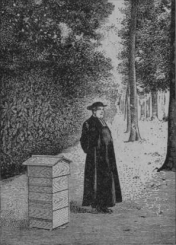
Warré plans
Warré methods
Warré modifications
Warré precursors
Groups / Fora
Google
e-group
Biobees.com
forum
Abbé Warré's book
Beekeeping for All:
Gilles Denis
Gilles Denis is a commercial beekeeper with over 300 hives (13.06.16) and a supplier of Warré equipment based at 2 Rue Jean Monnet, 42650 St Jean Bonnefonds, France (tel. 33 (0)4 53 86 23). It is in the Rhône valley about 60 km south west of Lyon.
His well illustrated website ( http://www.ruche-warre.com ) includes points to his videos of techniques, bee and equipment supplies (but no online ordering at the time of writing) and details of his book Mode d'emploi de la ruche Warré.1 The book is in process of translation for an English edition. He also gives courses (stages) for up to 10 people at a time at the village of St Victor, about 20 km north-west of Tournon-sur-Rhône. His YouTube channel is at
https://www.youtube.com/channel/UCMsJGtmNWQIx0yKixBKLZOw
.We include Gilles Denis' site under 'Warré Modifications' because of his use of half-frames (see illustration) and a completely different arrangement for the roof.
Half-frames
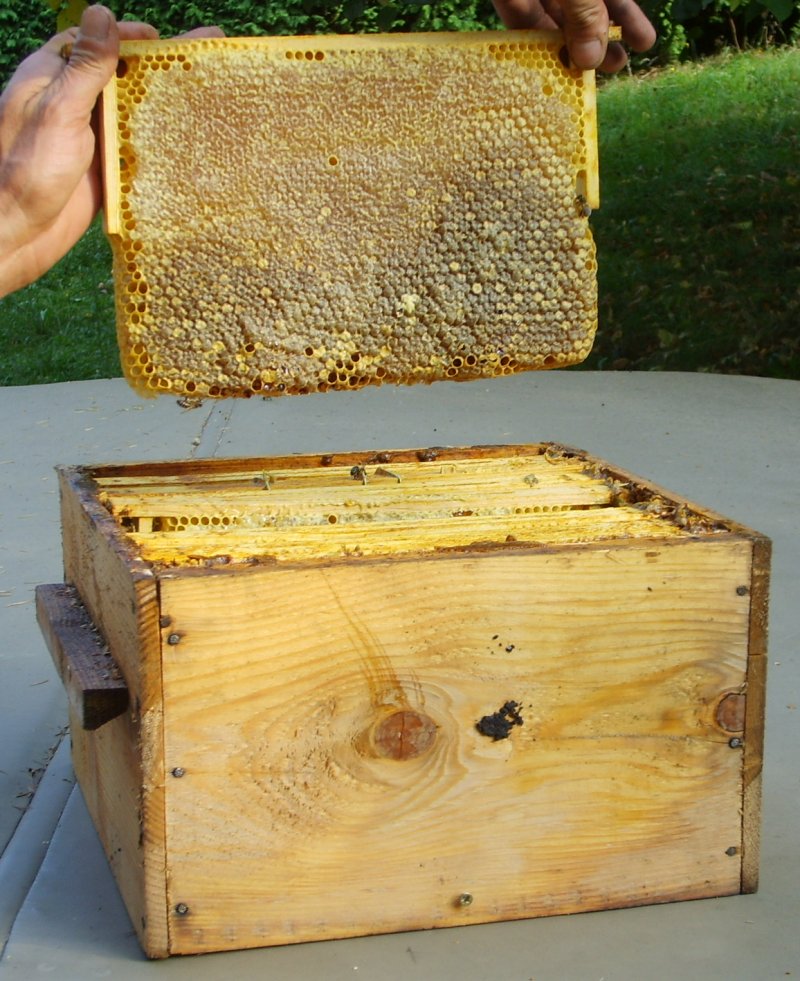
Denis devotes a page of his web site to the issue of frames versus top-bars. More than 80% of his Warré hives, which are sized to the same 300 x 300 x 210 mm internal measurements as Warré's, are fitted with top-bars only because there is no need to take the combs out of them. He points out that whether you use frames or top-bars depends on the aim in view. The main principle of the Warré is manipulating complete hive-body boxes, not frames. Furthermore, the frames should not be there especially because they take up a lot of room in the colony and for the simple fact that removing frames upsets the bees.
When he switched from Dadants to Warrés Denis used frames at first because not using them seemed inconcievable at the time. Denis finds frames useful for breeding, grafting and any other operation that requires lifting a comb, but recognises that as the frames become obscured and stuck to the walls etc., they present the same problems as in a Dadant.
He thus came to use simple top-bars too and found them satisfactory except that the fragile combs needed a lot more care and thus time to remove them. Also, to harvest the honey it is only necessary to cut the comb off the bar, crush it and allow the honey to flow out. This also removed the problem of storing comb from season to season. It is made afresh by the bees.
He observed for a long time the construction of comb in the hives without frames and concluded that they only stick the upper tiers of their constructions to the walls of the hive. It is only to a small extent but it is sufficient to inconvenience the beekeeper. So he developed an intermediate between the frame and the top-bar by adding projections of a few centimetres at each end of the top-bar. These modified top-bars he calls porte-rayons or 'comb carriers', which we here refer to as 'half frames'. He finds that they have all the advantages of frames and top-bars, without the inconveniences of either. They are essentially a sawn-off version of the 24 mm wide Warré frame, only instead of the side-bar projecting 190 mm from the bottom of the top-bar it projects 90 mm. It is made of the same thickness wood as the top-bar. The half frames are a registered design.
The half-frames are used solely for queen rearing and other needs connected with the brood that do not concern the beginner. Denis concludes (translating):
'There is no need for polemic on this subject because the Warré hive is conceived solely out of respect for the well being of the bees and thus of not falling back into the system of frames. The Warré is a simple hive, why complicate it?'
What was Warré's own position regarding frames? Even in early editions of his book Beekeeping For All, Warré discussed the pros and cons and advised against using them, as shown in the 5th edition:
'Nowadays, I recommend without hesitation the People's Hive with fixed combs, even for very large enterprises. [...] However, out of respect for the freedom of my readers, I will describe the People's Hive in its three forms: fixed comb, ordinary frames, open frames with closed ends.'2
This web site is premised on the 12th edition of Beekeeping For All which describes the top-bar version of his hive only. But, for the sake of completeness, we provide a translation of the pages of the 5th edition describing the two versions of his hive with frames, the second having no bottom-bars.3 In this respect, this second version is similar to the Denis frame illustrated above, however, Warré's 'three-quarter' frame has wide (36 mm) side-bars that abut each other, forming a second wall of the hive. For a comparison of Denis' frame with Warré's full frame, see our page on frames.
Top-of-hive configuration
Denis' commercial scale operation includes migratory beekeeping, for example to lavender.
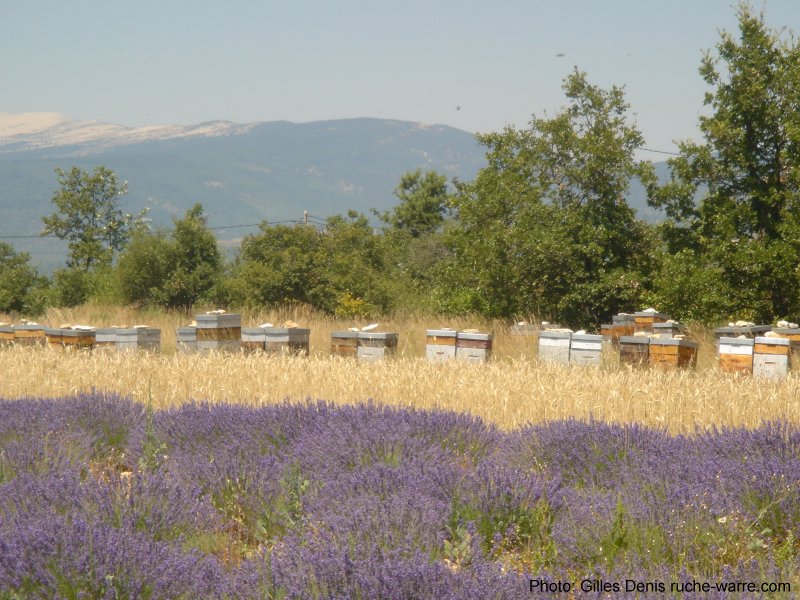
Partly to facilitate transport, Denis has made the top of the hive more compact. This allows stacking and closer packing of hives on a trailer, which would clearly be more difficult with the standard Warré roof. It is covered with a plain square roof which is 60 mm deep and made of bent galvanised steel sheet, secured at the corners apparently by a spot-weld (soudée).
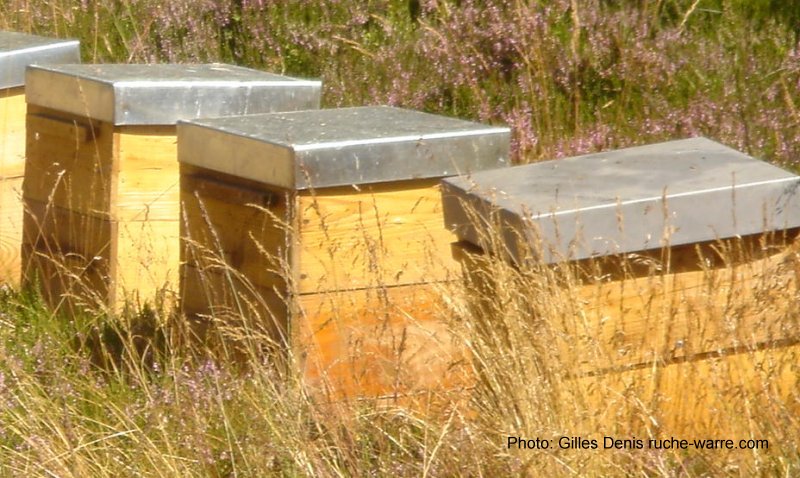
Under the roof is a board 350 x 350 mm square and 10 mm thick resting on and fixed to two battens, also 10 mm thick. It is illustrated here in the following sketches drawn by Bernhard Heuvel from details in Gilles Denis' book (1):
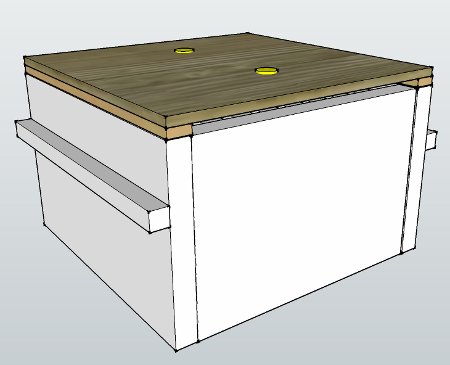
Under the board, and resting on the top-bars, is a propolis mesh. The board has holes for two commercially available bee escapes (yellow circles in the sketches). The underside of the board has an additional batten 7 mm deep and divided to form a groove in which a division board can be inserted to form two 4-comb nucs.
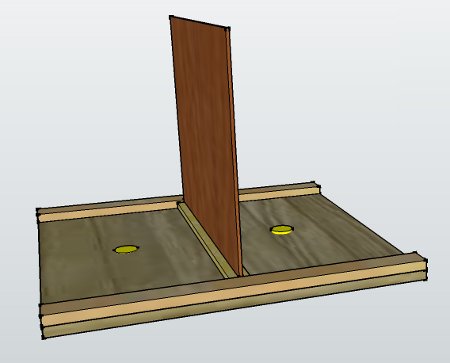
Below: the cover of Gilles Denis' book
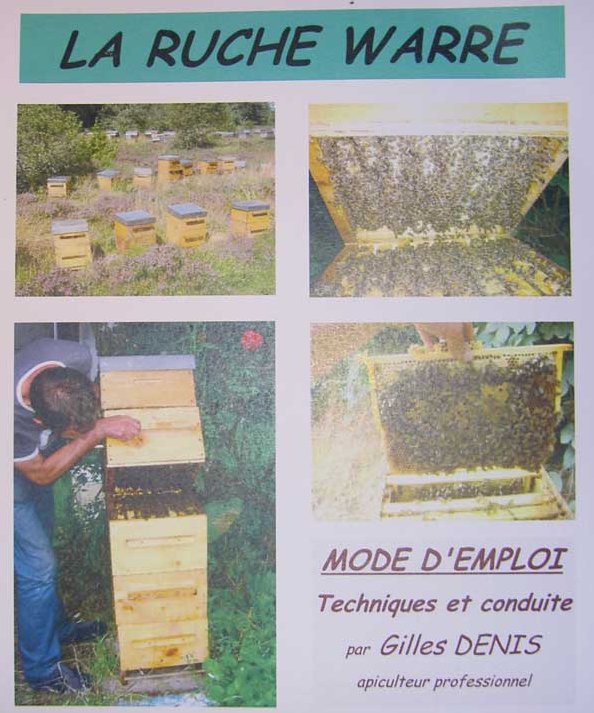
Gilles Denis also gives beekeeping courses. Here are Olin Bezchleba's photos of a course he attended in Ardèche, France a few years ago:
https://www.flickr.com/photos/125504057@N08/albums/72157669139223275/with/14426376615/
References
1) Denis, G. (2008) La ruche Warré: Mode d'emploi -- Techniques et Conduite (The Warré Hive: Method of use -- Techniques and Management). St Jean Bonnefonds. ISBN 978-2-9533201. http://www.ruche-warre.com.
2) Translated from page 46 of L'
Apiculture Pour Tous - Manuel-Guide Des Fixistes Et Des Mobilistes (Beekeeping
For All - A manual for fixed comb and mobile frame beekeepers) by Abbé Warré, Bureau du
'Travail au Grand Air', 17 Rue Littré, 17 Tours, France, 5th edition, 1923.
A PDF of a scan/OCR of the 5th edition in French is downloadable at:
http://warre.biobees.com/warre_5th_edition.pdf
(5 Mb)
3) Translation of pages 60-71 of L' Apiculture Pour Tous - Manuel-Guide Des Fixistes Et Des Mobilistes (Beekeeping For All - A manual for fixed comb and mobile frame beekeepers) by Abbé Warré, Bureau du 'Travail au Grand Air', 17 Rue Littré, 17 Tours, France, 5th edition, 1923. Download PDF.